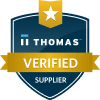Wastewater facilities treat and process wastewater to acceptable thresholds for environmental reintroduction. The procedure consists of several steps, from testing and pumping to filtration and sterilization, each requiring specialized equipment. Special brushes in a variety of forms are needed depending on the intended processing stage.
For more than a century, the Cocker-Weber Brush Company has been considered a pioneering industrial brush manufacturer. We produce the best alternative to maximize your wastewater management facility’s operations by focusing on quality and innovation based on need and design discussions.
This article will guide you through the types and applications of brushes commonly used in wastewater facility treatments.
What Is the Wastewater Management Process?
Wastewater management — characterized as the collection, treatment, and reuse of wastewater — is an essential method of conserving water resources. Treatment facilities use special brushes for the following purposes:
Screen Cleaning
Screening equipment separates rags, wood shards, plastic materials, and grease from wastewater. The removed material is washed, pressed, and disposed of in a landfill, while the screened wastewater is pumped to the grit removal step.
Rake Cleaning
This process requires sturdy brushes as it segregates bulky matter carried by the water. If these substances are not removed, they can reduce the water effectiveness and sludge treatment or impede treatment operation and implementation.
Odor Control
This process necessitates highly durable and chemically resistant brushes since odor is unavoidable in most areas of a wastewater treatment facility. The primary issues comprise the immediate treatment and sludge handling, emitting ammonia, mercaptans, hydrogen sulfide, and skatoles, among many others.
Treatment Tank Temperature Regulation
This step utilizes brushes that can withstand extreme temperatures because most bacteria thrive at 68 °F to 95 °F. In addition, lower temperatures allow these microorganisms to work more slowly, but high temperatures can kill the bacteria and render the process ineffective.
Waste Transportation
Depending on its source, water can contain dissolved and suspended contaminants, including highly degradable organic substances, salts, heavy-metal compounds, and fertilizers. Brushes that are long-lasting and resistant to corrosion, chemicals, and extreme temperatures are used to ensure smooth waste transport.
Waste Separation
Separating suspended particles from wastewater using gravitational forces is known as wastewater clarification or sedimentation. Brushes with chemical resistance are used to treat colloidal solids during the separation process by coagulation and flocculation.
Sealing Gaps
Foam or bristle brushes are required in sealant applications as they are frequently used to keep leaks from penetrating gaps and polluting the soil and groundwater around them.
Types of Wastewater Brushes
Industrial brushes are designed to perform specific tasks and other applications during wastewater management. Among the most common brushes are the following:
Sewage Brushes
These brushes are used in sewage treatment systems to remove pathogenic organisms and microorganisms. They also filter out pollutants before they exit the tank and enter the ground.
Pipe Brushes
In plumbing applications, pipe brushes are used to clean pipes and other difficult-to-reach areas. Typically, they are attached to a long, thin metal piece you can insert deep into a pipe. The brush diameter should be equal to or greater than the pipe diameter.
Waste Brushes
Waste brushes remove as many suspended solids as possible before discharging the remaining water, known as effluent, back into the environment.
Sludge Brushes
This brush type is used to treat sewage sludge, a mud-like residue resulting from wastewater treatment. The sludge contains contaminants and pathogens such as bacteria and viruses. However, it could also have beneficial organic matter and nutrients like nitrogen and phosphorus, making it an excellent fertilizer or soil improver.
Wastewater Brushes
Wastewater brushes move and separate waste during the water treatment process. In this industry, they are also used to seal gaps and openings in any facility or processing equipment area.
Wastewater Brushes From Cocker-Weber
Cocker-Weber offers the following brush types appropriate for waste management applications:
- Tufted Strip Brushes – 5 in. Long Strip Brushes : Tufted strip brushes are highly resistant to corrosion and work well in areas with restricted movement or no power source. They have plastic bases with holes for holding the bristles.
- Custom Brushes: Cocker-Weber customizes brushes as some waste management applications need tailored equipment to meet specific requirements.
- Spiral Round Brushes: Spiral round brushes are cylindrical and ideal for the high-speed removal of sticky or dried accumulations in wastewater management processes.
Exceptional Brushes From Cocker-Weber for Your Waste Management Needs
Are you in need of durable brushes for your wastewater management applications? Cocker-Weber got you covered! Regardless of your requirements, we can help you find the best solution for your application. We provide cylinder, wheel, disk, cup & end, and tufted strip & plate brushes for various industries and applications.
Contact us now to learn more about our wastewater brushes, or complete our online form for inquiries and additional information.




